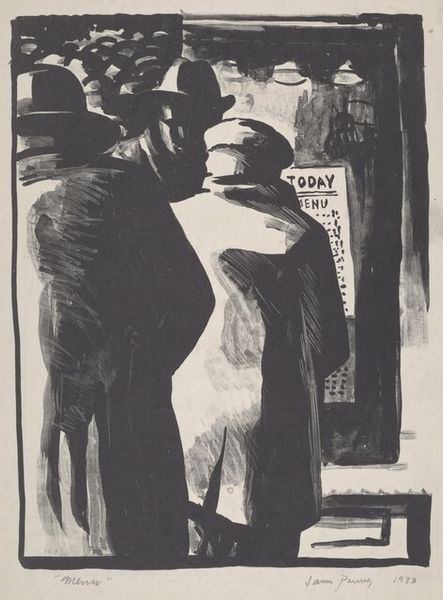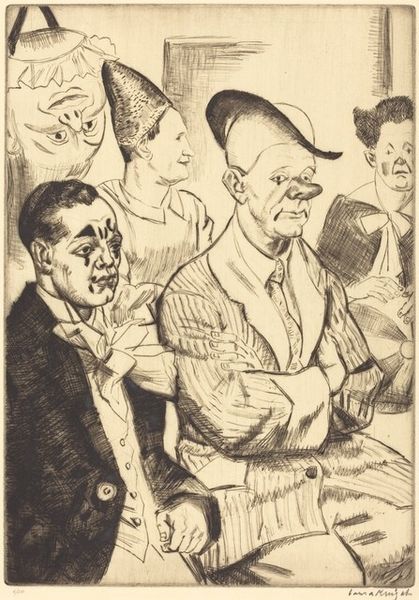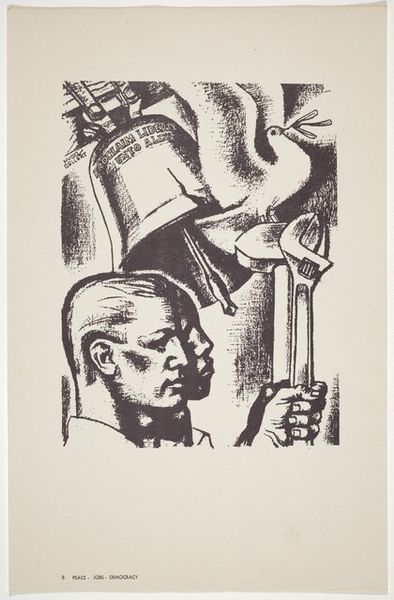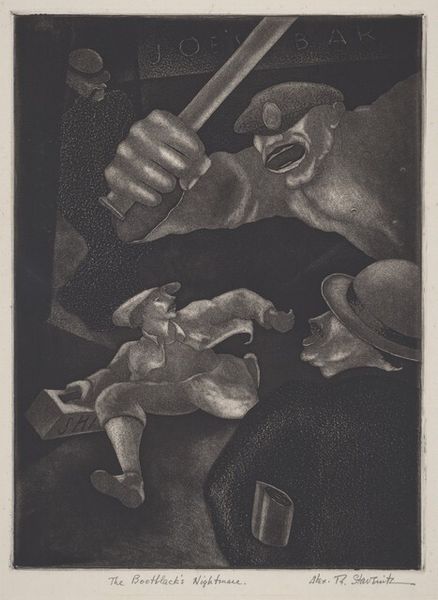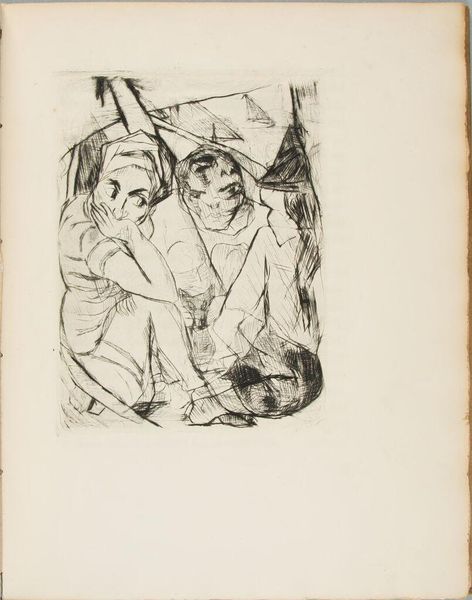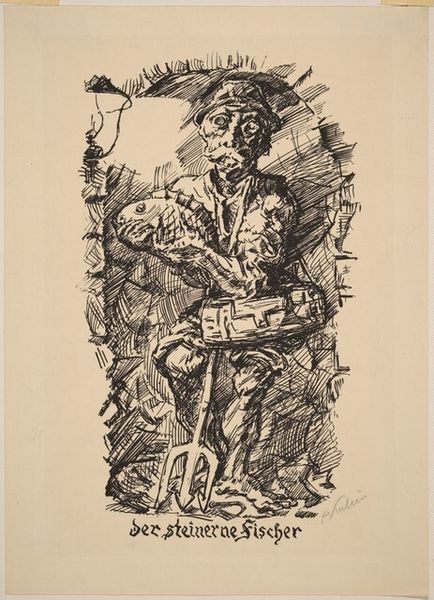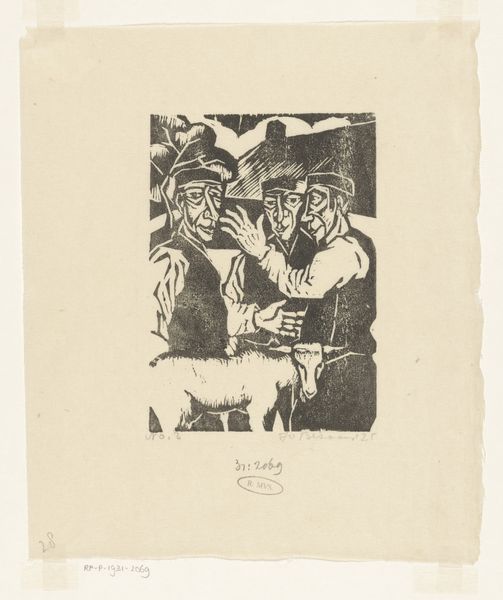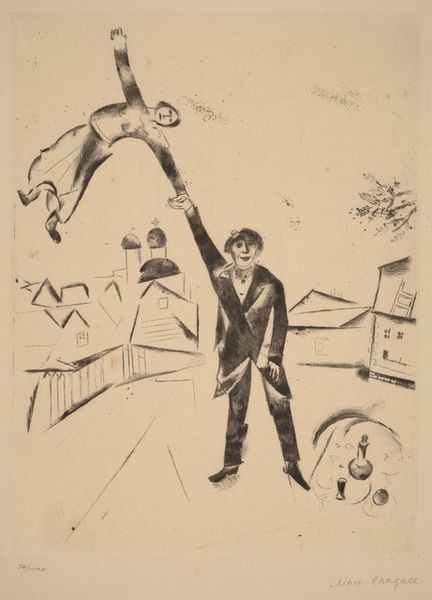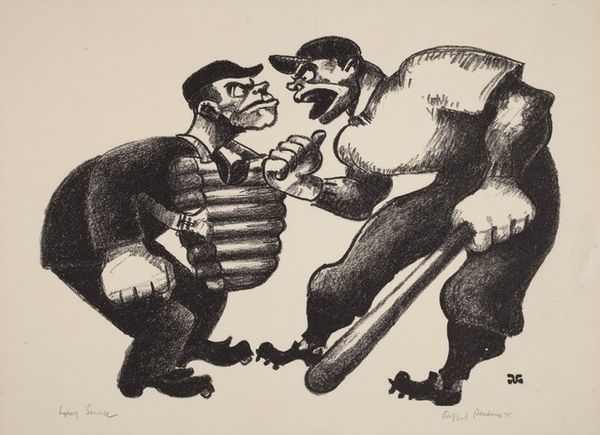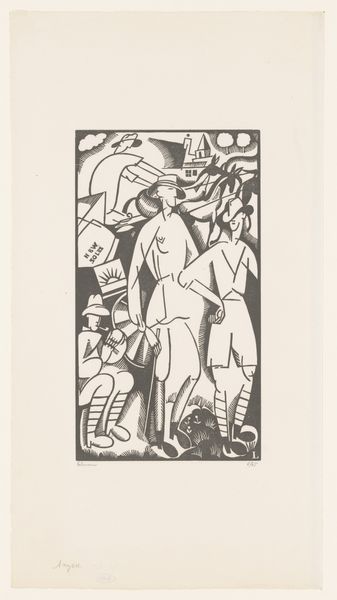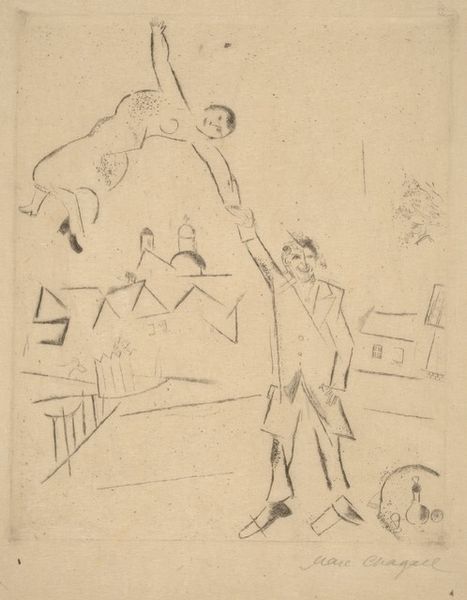
print, etching
#
portrait
#
cubism
# print
#
etching
#
figuration
#
pencil drawing
#
geometric
#
modernism
Dimensions: plate: 27.7 x 21.5 cm (10 7/8 x 8 7/16 in.) sheet: 37.7 x 32.2 cm (14 13/16 x 12 11/16 in.)
Copyright: National Gallery of Art: CC0 1.0
Editor: Here we have Marc Chagall's "The Grandfathers," created in 1922. It's an etching, so a print. The geometric shapes used to depict the figures is fascinating, especially given the personal subject matter. How do you interpret the forms Chagall employed? Curator: The power of "The Grandfathers" resides in its masterful articulation of form through line. Note how Chagall uses hatching and cross-hatching to create a sense of volume, almost sculptural. The fracturing of planes, the cubistic influence, isn't about fragmentation but rather a reconstruction of memory and emotion through geometric vocabulary. Do you see how each line contributes to the overall tension and balance within the composition? Editor: Yes, it's like he's dissecting them and putting them back together, but not quite as they were. There's something almost alien about their appearance, yet still familiar in the way they're posed, in their gestures. Curator: Precisely. Observe the nuanced textures achieved through the etching process. The varying depths of the lines create areas of light and shadow, adding depth and dynamism to the otherwise muted palette. Consider also how the sharp angles and juxtaposed planes create a visual rhythm, a pulse, that enlivens the scene. The eye is never at rest, always moving, connecting the fractured elements. What feeling do you get from this deliberate manipulation of form? Editor: It feels both reverent and analytical. The sharp lines provide such great clarity, even though the forms aren't always immediately decipherable. Curator: An excellent observation. Chagall has captured their essence through abstraction, not simple mimesis. A triumph of emotional form. Editor: It is amazing to see how much you can learn just by paying close attention to composition. Curator: Indeed, form speaks volumes if you lend an ear.
Comments
No comments
Be the first to comment and join the conversation on the ultimate creative platform.
